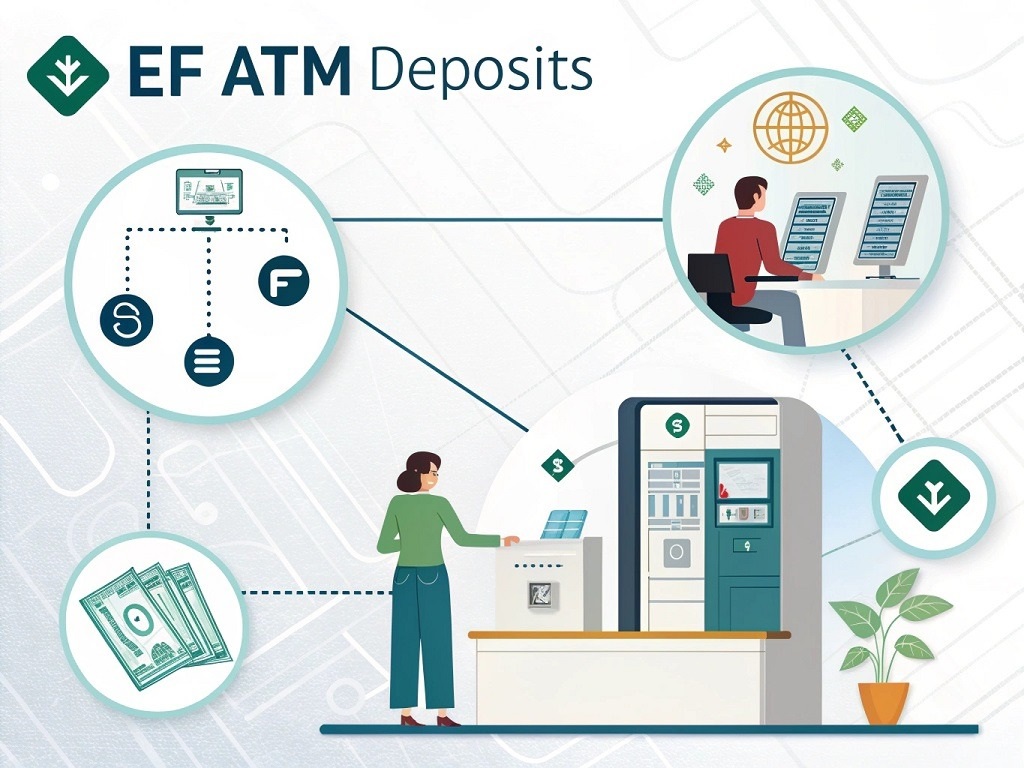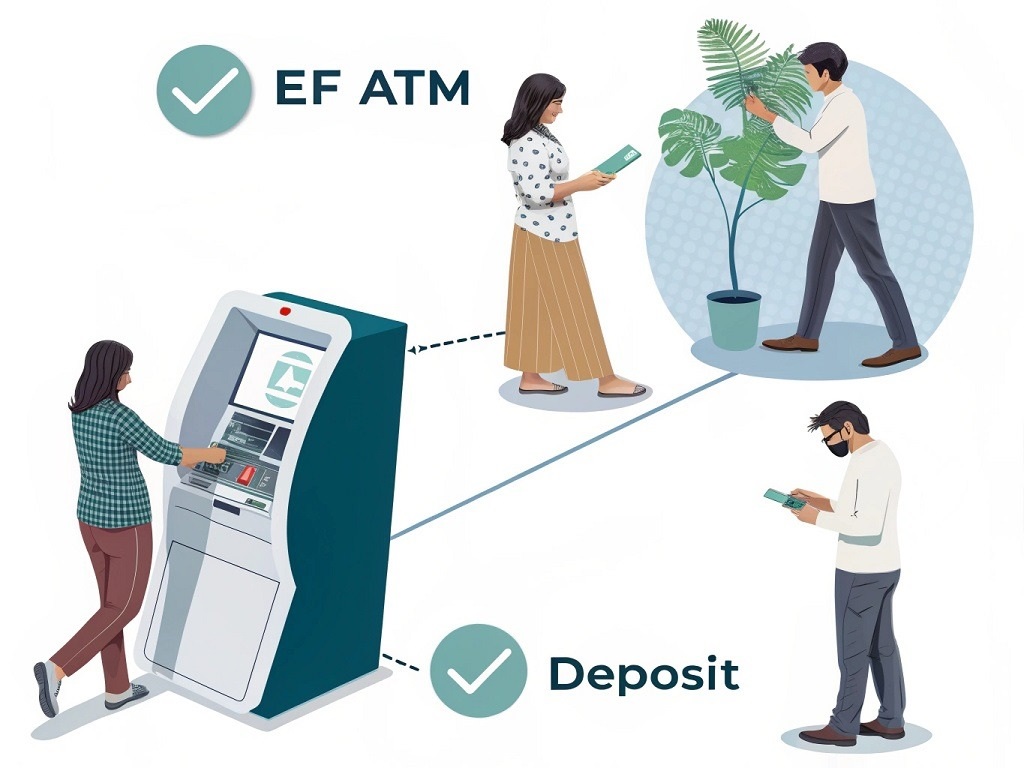Adjustment to EF ATM Deposit Meaning Explained Clearly

When you check your bank statement and see an unfamiliar entry labeled “Adjustment to EF ATM Deposit,” it can be confusing. Many people wonder what this transaction means and whether they should be concerned. Understanding these banking terms is crucial for managing your finances effectively. Tradeizze provides comprehensive guides to help you navigate various financial terms and banking procedures.
Electronic fund transfers have become increasingly common in today’s digital banking world. However, adjustments to these transactions can sometimes appear on your account without clear explanation. Therefore, it’s important to understand what these adjustments represent and when they typically occur.
Banks use specific terminology for different types of transactions. The adjustment to ef atm deposit meaning relates to corrections or modifications made to electronic fund deposits processed through ATM systems. Additionally, these adjustments can happen for various reasons that we’ll explore in detail.
What Does EF ATM Deposit Mean?
EF ATM deposit stands for Electronic Fund ATM deposit. This term describes money that has been deposited into your account through an automated teller machine using electronic processing. However, the system processes these deposits differently than traditional cash deposits.
When you make a deposit at an ATM, the machine scans checks and counts cash electronically. The bank’s system then credits your account based on this initial processing. Nevertheless, human verification often follows to ensure accuracy.
Sometimes discrepancies occur between the initial electronic reading and the actual deposit amount. Therefore, banks must make adjustments to correct these differences. These corrections appear as “Adjustment to EF ATM Deposit” on your statement.
Common Reasons for EF ATM Deposit Adjustments
Several factors can trigger an adjustment to your EF ATM deposit. Understanding these reasons helps you identify why the adjustment appeared on your account.
Incorrect Check Reading
ATM machines use optical character recognition to read checks. However, this technology isn’t always perfect. Poor handwriting, faded ink, or damaged checks can cause misreading. Consequently, the machine might credit your account for an incorrect amount initially.
Bank employees later review the actual check and make necessary corrections. This review process typically happens within one to two business days. Therefore, you might see the adjustment appear shortly after your original deposit.
Cash Counting Errors
Although ATM cash counters are highly accurate, they occasionally make mistakes. Bills that are torn, folded, or stuck together can cause counting errors. Additionally, foreign currency or counterfeit bills might initially be accepted but later rejected.
The adjustment corrects these counting discrepancies. Furthermore, the bank removes any deposits that contain invalid currency from your account balance.
Deposit Processing Delays
Sometimes adjustments occur due to processing delays rather than errors. Banks might initially provide provisional credit for your deposit. However, they later adjust the amount based on actual verification results.
This process protects both the bank and the customer. Moreover, it ensures that only legitimate deposits are permanently credited to accounts.
How to Handle EF ATM Deposit Adjustments
When you notice an adjustment on your statement, take specific steps to understand and address it properly. First, review your recent ATM deposit receipts carefully. Compare the receipt amounts with the adjustment entries on your statement.
Next, calculate whether the adjustment resulted in a net positive or negative change to your account. Positive adjustments mean you received additional credit. Negative adjustments indicate money was removed from your account.
Contact your bank if the adjustment seems incorrect or unexplained. Provide them with your deposit receipts and transaction details. Most banks can quickly explain the reason for the adjustment and provide documentation.
Additionally, keep detailed records of all your ATM deposits. Take photos of checks before depositing them and save all receipt copies. This documentation helps resolve any future discrepancies quickly.
Preventing Future Deposit Issues
You can minimize the likelihood of deposit adjustments by following best practices. First, ensure checks are properly endorsed and filled out clearly. Use dark ink and write legibly to help ATM scanners read the information accurately.
When depositing cash, make sure bills are flat and undamaged. Remove any paper clips, staples, or rubber bands before inserting money into the machine. Furthermore, count your cash carefully before making the deposit.
Choose well-maintained ATMs for your deposits. Machines in bank branches typically receive better maintenance than standalone units. Therefore, they may process deposits more accurately.
Always verify that your deposit envelope contains the correct amount before inserting it. Double-check that you’ve included all intended items. Moreover, ensure the envelope is properly sealed to prevent contents from spilling out.
Impact on Your Account Balance
EF ATM deposit adjustments can affect your account balance and available funds. Positive adjustments increase your balance, while negative adjustments decrease it. However, the timing of these changes can impact other transactions.
If you’ve written checks or made purchases based on the initial deposit amount, a negative adjustment might cause overdrafts. Therefore, monitor your account closely after making ATM deposits.
Most banks provide provisional credit for deposits, which becomes available immediately. Nevertheless, this credit is subject to verification and potential adjustment. Plan your spending accordingly to avoid potential issues.
Consider maintaining a buffer in your account balance to accommodate possible adjustments. This practice helps prevent overdraft fees and declined transactions.
When to Contact Your Bank
Certain situations require immediate contact with your bank regarding EF ATM deposit adjustments. Contact them if the adjustment amount seems significantly different from your actual deposit.
Furthermore, reach out if you receive multiple adjustments for the same deposit. This pattern might indicate a processing error that needs correction.
If you never made the deposit referenced in the adjustment, contact your bank immediately. This situation could indicate fraudulent activity or a processing error affecting your account.
Additionally, call your bank if adjustment timing affects other transactions or causes overdraft fees. Many banks will reverse fees caused by their processing adjustments.
Read More Also: Innovations in Materials and Design for Modern Boats
Conclusion
Understanding adjustment to EF ATM deposit meaning helps you manage your banking relationships more effectively. These adjustments typically result from necessary corrections to initial electronic processing. However, staying informed about your deposits and maintaining good records protects your financial interests.
Remember that most adjustments are routine corrections that ensure accurate account balances. Nevertheless, always verify that adjustments are legitimate and contact your bank with any concerns. By following best practices for ATM deposits, you can minimize the likelihood of future adjustments and maintain better control over your finances.
Read More Also: The Silent Threats of Outdated Control System Integration
Frequently Asked Questions
What does “Adjustment to EF ATM Deposit” mean on my bank statement?
This entry indicates that your bank has made a correction to an electronic fund deposit you made at an ATM. The adjustment occurs when the initial electronic processing amount differs from the actual deposit amount after human verification.
How long does it take for EF ATM deposit adjustments to appear?
Most adjustments appear within one to three business days after your original deposit. However, the timing can vary depending on your bank’s processing schedule and the complexity of the verification required.
Can EF ATM deposit adjustments be negative?
Yes, adjustments can be either positive or negative. Negative adjustments occur when the initial credit was higher than the actual deposit amount. This happens when checks are misread or cash counting errors initially favor the depositor.
Should I be concerned about frequent EF ATM deposit adjustments?
Occasional adjustments are normal, but frequent adjustments might indicate issues with your deposit practices or the ATM you’re using. Consider using different machines or improving how you prepare deposits for processing.
Will I be charged fees for EF ATM deposit adjustments?
Banks typically don’t charge fees for the adjustments themselves. However, if a negative adjustment causes your account to become overdrawn, you might incur overdraft fees. Monitor your account balance closely after making deposits to avoid this situation.

